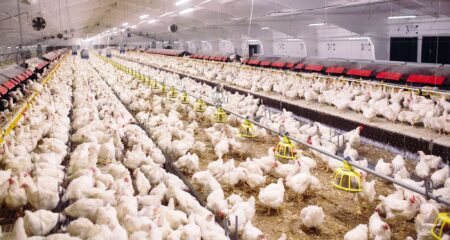During the first two decades of the twentieth century, engineers threw their rule books out the window in search of a tractor that would meet the growing need for a lightweight machine that could run down rows.
Out of the myriad unusual — if not downright outlandish — configurations that emerged from this period, the most predominant design was the motor cultivator. That concept, first introduced by the Universal Tractor Manufacturing Company in 1914, launched an era when motor cultivators were all the craze.
Within a few years, quite a number of companies were selling a motor cultivator. While a great many of these firms were new to the tractor business, the motor cultivator list also included some heavy hitters like Allis-Chalmers, Emerson-Brantingham, J.I. Case, and IHC. Even John Deere prototyped two motor cultivator designs. Toro, today’s lawn garden tractor giant, got its start in horsepower by producing a motor cultivator.
Front-Drive Mania
Wisconsin Historical Museum
As the name implies, the motor cultivator design allowed the machine to maneuver down crop rows to tackle growing-season tillage chores. Yet, they were fully versatile tractors capable of pulling primary tillage tools (plows and disks), planting gear, or forage harvest equipment.
A great many motor cultivators also offered a belt pulley to power stationary implements like corn shellers or threshers.
Although there were variations on the motor cultivator design theme, the majority of the machines on the market emulated Universal Tractor’s Model 10-12 configuration.
That tractor featured two front wheels powered by a two-cylinder engine nestled between those wheels. Trailing behind were two smaller sulky wheels. Their purpose was to support the driver and implements either suspended (underslung) from the midframe or trailing behind (either mounted to the wheel axle or drawn by a rear hitch).
Articulated Pioneer
Ron Van Zee
Beyond this novel configuration, the Universal tractor also made history, thanks to its unique steering system. The tractor was articulated at its midsection. A pinion gear and gear rack that acted like a pivot point for steering were positioned in that location. This composition established the Universal as the first successful articulated tractor on the market.
It was a design that four-wheel-drive vehicle makers would copy decades later.
Moline Plow Company took notice of Universal Tractor and purchased the company in 1915. It then made some major improvements to the tractor before reintroducing it as the Moline Universal Model D in 1917. Those improvements included equipping the tractor with such advances as a high-tension ignition system, super-sensitive electric governor, starter, and headlights that operated off a battery.
The tractor’s four-cylinder engine not only was pressure-lubricated but also operated at a rated speed of 1,800 rpm. Both of those innovations were rarely found in tractors of that day.
The Universal D was an instant hit with farmers. So much so that demand inspired Moline Plow to build what was considered at the time to be the world’s largest tractor factory in Moline, Illinois.
The Competition Notices
Not surprisingly, other manufacturers took note of Moline Plow’s success. Universal D knockoffs as well as variations quickly hit the market. In fact, by 1919, at least 18 firms were building a motor cultivator.
“The motor cultivator… may overtake and even eclipse the manufacturing production of tractors inside of three years,” Agrimotor Magazine prophesied that same year.
IHC Enters the Market
Not to be outdone by upstart Moline Plow, International Harvester took a unique approach to its motor cultivator configuration by driving its vehicle with two rear wheels that pivoted for steering on headlands. The tractor’s engine sat directly over these wheels to “assure ample traction, eliminate the need for a differential, and make it possible for the motor cultivator to turn within its own length,” IHC bragged at the time.
A cultivator, integrally mounted to the tractor, was pushed in front just ahead of the driver, who had a commanding view of the rows. The IHC Motor Cultivator, introduced in 1917, was later updated with a rear hitch.
When traveling down the row, however, the rear wheels were locked into a forward position. The operator would steer the tractor using right or left foot pedals that moved the cultivator gangs and two front wheels.
Another motor cultivator variation included more traditional configurations built by Avery, Bailor, Emerson-Brantingham, and J.I. Case. These motor cultivators featured a single front steering wheel positioned just ahead of a midframe-mounted engine. Behind that engine were two rear-drive wheels with implements either mounted to the rear axle or drawn by a rear hitch.
Thus, these machines represented some of the first tricycle tractors in agriculture.
The Concept Dies
University of Nebraska
For all its advantages, interest in the motor cultivator soon waned, as a new generation of more powerful, light-weight tractors built around the traditional configuration of two drive wheels at the rear and two steering wheels up front hit the market.
The rate at which the motor cultivator disappeared from the market was as dazzling as its meteoric emergence. By 1924, just 10 years after its introduction, this vehicle concept had all but disappeared.


:max_bytes(150000):strip_icc()/IMG_7936-c12c642ad0064146a4aecfc1a60502a3.jpeg)
:max_bytes(150000):strip_icc()/HTTJohnDeeretractorwithtillage_preview-6e8cfa3643f043efb29085bd78d76c98.jpg)
:max_bytes(150000):strip_icc()/Canadian20flag48553671412_aeb0538794_c-0bfa123de2b54e30ab4fadecae382d4a.jpg)


:max_bytes(150000):strip_icc()/100149064-cultivator1-321efe51f1714caeb80586e9c83a7e11.jpg)


:max_bytes(150000):strip_icc()/WheatField-CloseUp-2000-bc79406da4004a2d94bcb2c32153cc3a.jpg)